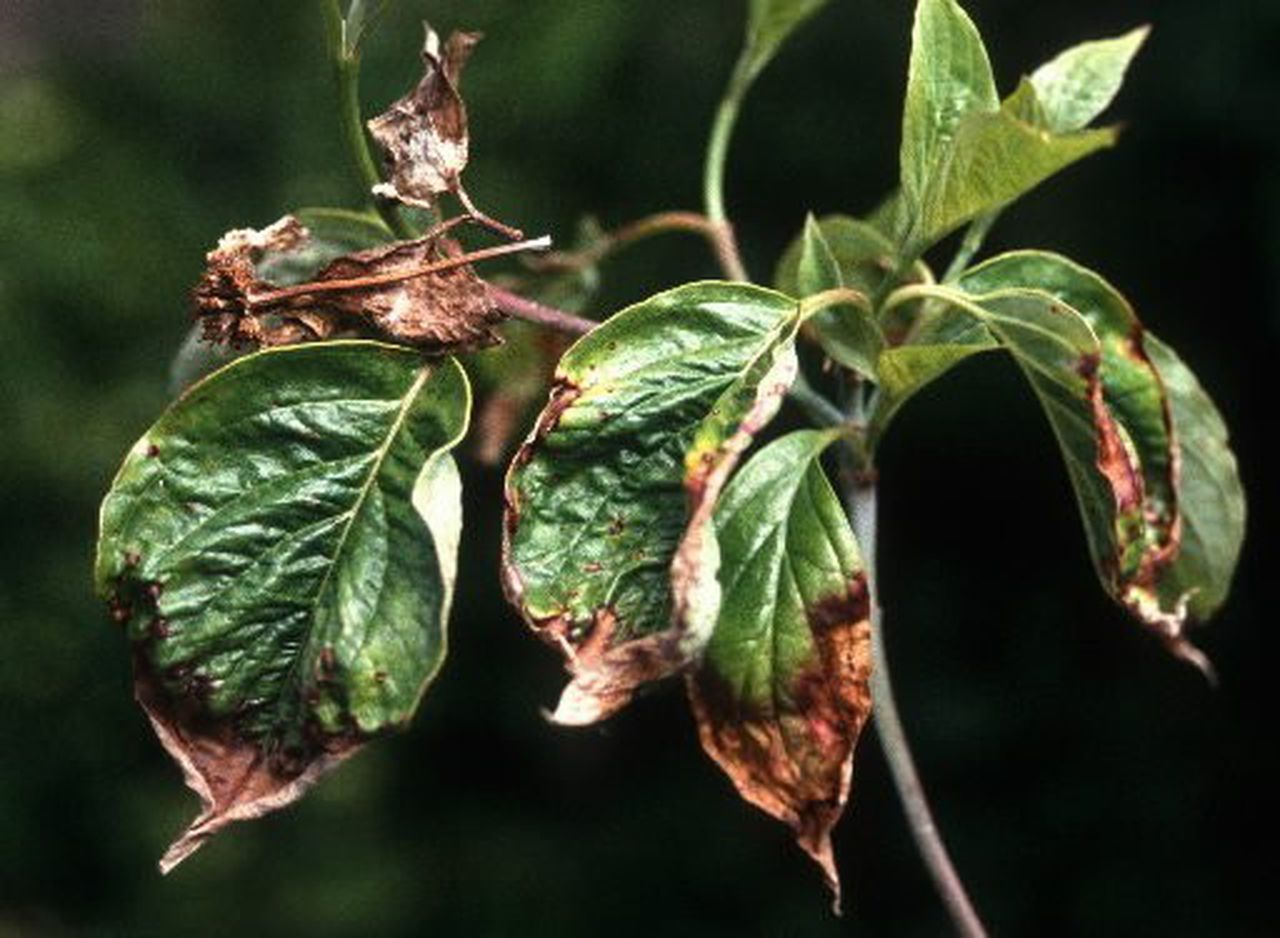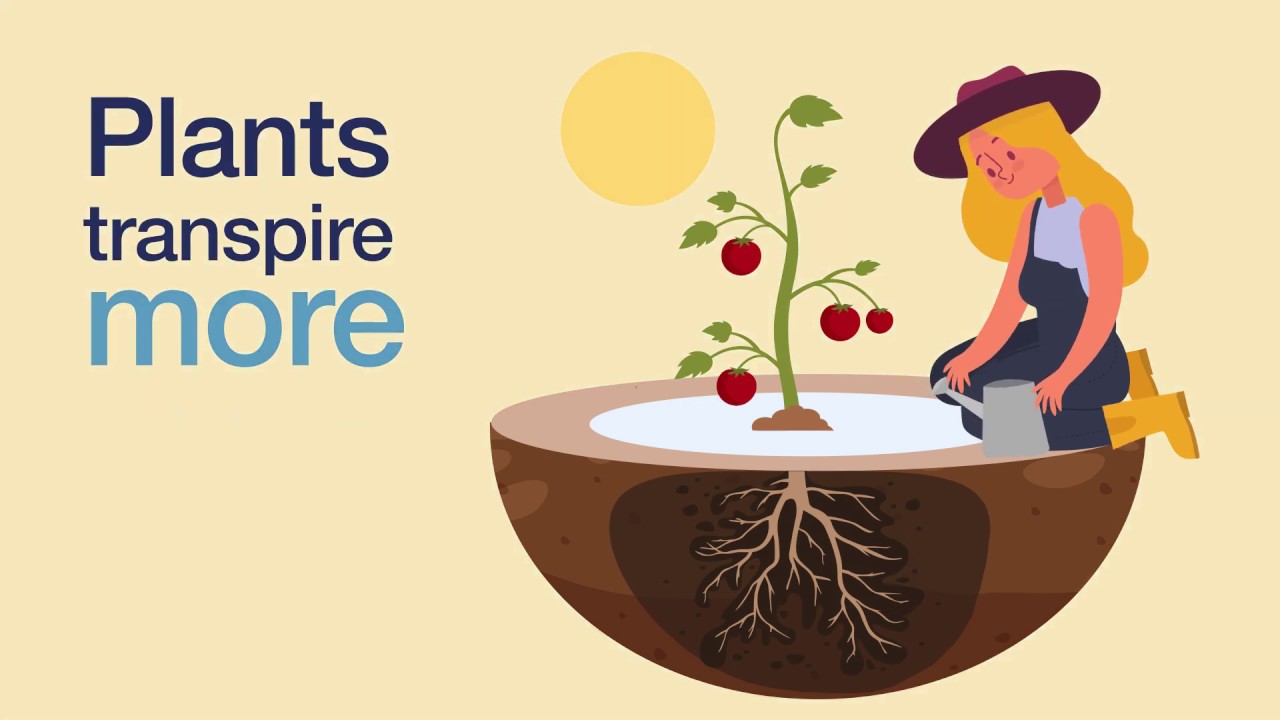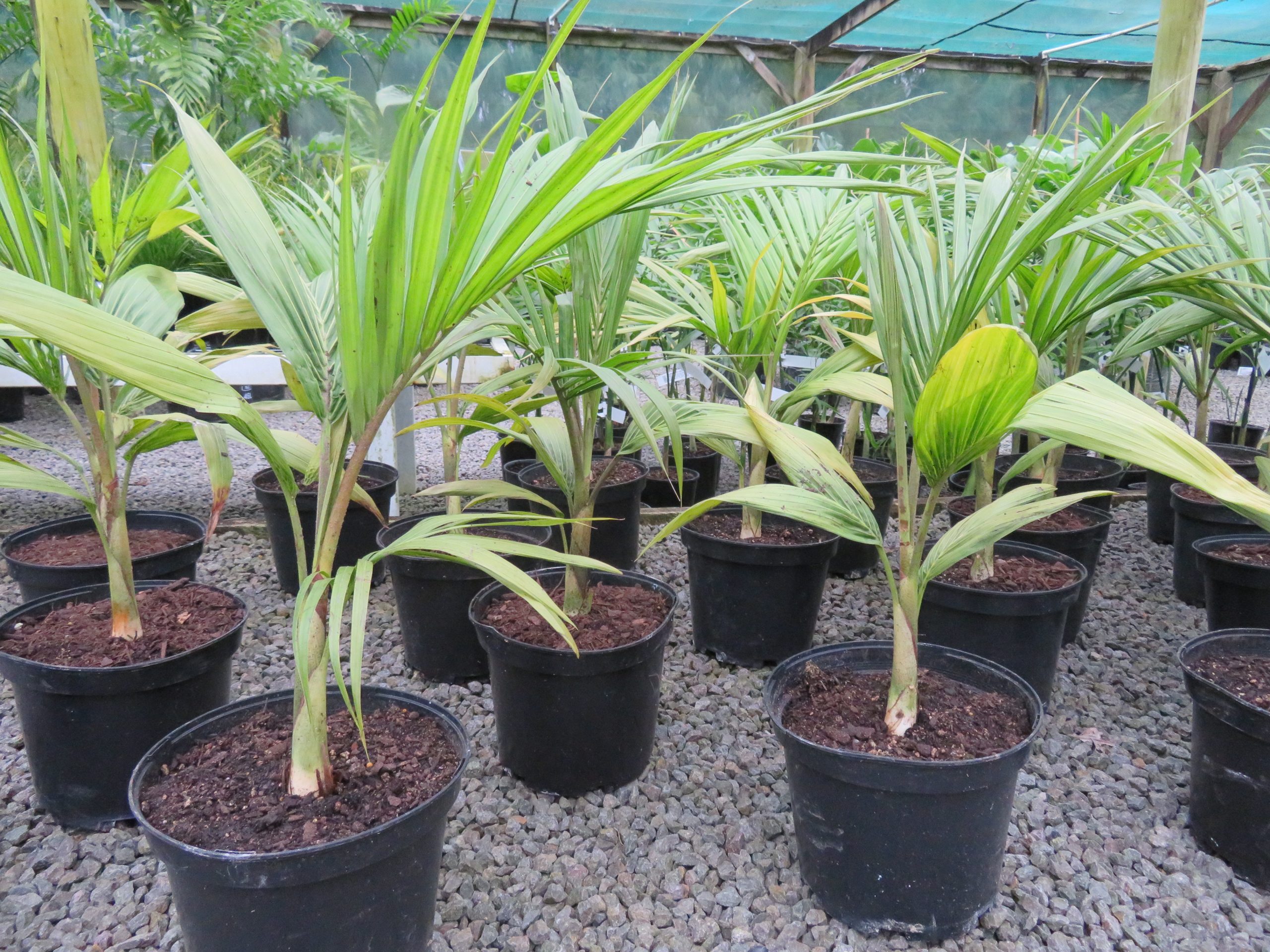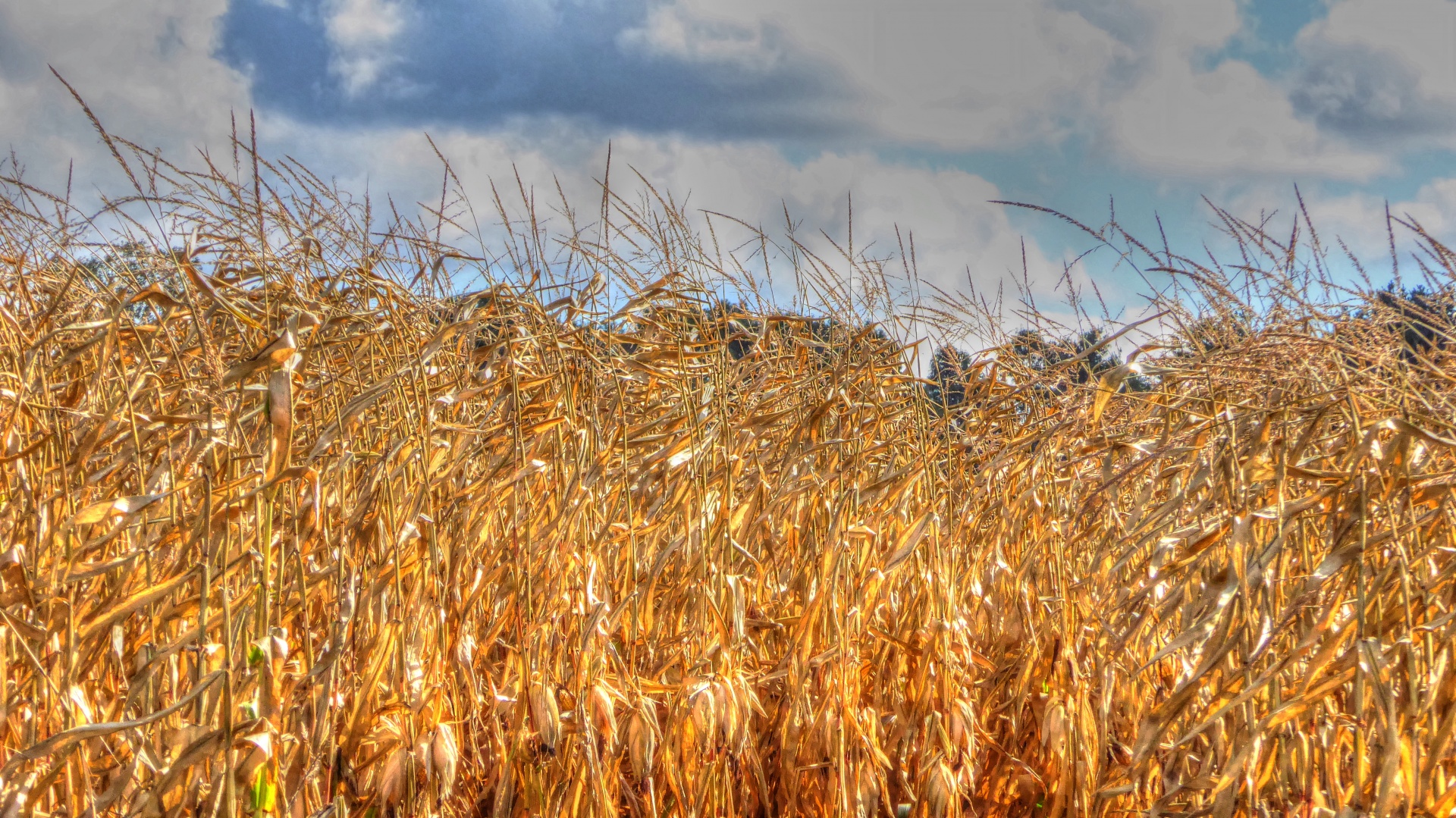Water Stress - How Does Plants Respond To Water Stress?
Plant growth and productivity suffer from water stress. One of the main goals of plant breeding is to develop crops that can grow and survive with less water. Water use efficiency (WUE) is a selection trait that affects crop quality and productivity in times of water scarcity. Plants use molecular mechanisms to reduce resource use and regulate growth in harsh conditions.
Author:Suleman ShahReviewer:Han JuJun 29, 202229 Shares752 Views

Plant growth and productivity suffer from water stress. One of the main goals of plant breeding is to develop crops that can grow and survive with less water.
Water use efficiency (WUE) is a selection trait that affects crop quality and productivity in times of water scarcity.
Plants use molecular mechanisms to reduce resource use and regulate growth in harsh conditions.
Photosynthesis serves as the foundation for plant growth. Nevertheless, excess light (EL) can do significant harm to plants.
Photooxidation caused by EL damages biological molecules and reduces plant productivity.
Water stress reduces leaf water potential and stomatal opening, reducing photosynthesis-related genes and CO2 availability.
Drought And Heat Stress
Water stress can result from two situations: either an excessive amount of water is present or there is a water shortage. The water-deficit stress, also known as the drought stress, is the more typical type of water stress.
A significant abiotic stressor that affects plant growth and development is drought. Through inadequate rainfall or modified precipitation patterns, it may also have an impact on crop productivity. In regions with low water availability, drought can be chronic or random and unpredictable due to weather changes during plant growth. As a result of climate changeand increasing water scarcity, the effects of drought are anticipated to worsen. High temperatures often accompany drought, promoting evapotranspiration and affecting photosynthetic kinetics, which reduces crop yields. The complex nature of growth regulation under stress has been highlighted in studies of plant responses to soil water deficit at developmental, physiological, and molecular levels. Severe water stress stops photosynthesis, disrupts metabolism, and kills plants.
Cell division is less inhibited by water stress than cell growth. It affects photosynthesis, respiration, translocation, ion uptake, carbohydrates, nutrient metabolism, and growth promoters. A better understanding of the morphoanatomical and physiological basis of water stress resistance in plants could be used to select or create new crop varieties with better underwater productivity. As a result of climate change, drought is expected to increase in many food-producing regions.
What Are The Impact Of Water Stress On Plants?
Plant liferequires water to survive. Water helps plants keep their cells from drying out and moves nutrients and raw materials to photosynthesis and seed production sites. Drought or root impairment causes water stress, which affects many invisible processes.
Wilting Of The Plant
Water stress causes wilting because plant cells lose their turgor pressure, which keeps them erect. Without this force, plant cells collapse, causing limp leaves. As plants wilt, their cells deflate and die. Green, partially wilted plants can recover if watered quickly; mulch helps maintain soil moisture.
A Reduction Photosynthesis
Plants create food through photosynthesis. The amount of water, sunlight, and CO2 a plant has affects how much food it can produce. When water levels are low due to water stress, photosynthesis can slow or stop, causing internal food supplies to diminish or disappear. If photosynthesis stops completely, plants may yellow.
A Reduction In Respiration
Respiration is how plants convert food into energy for system processes. Actively growing plants respire heavily, using up food quickly. With low water levels reducing a plants' ability to photosynthesize, its system processes slow down, causing reduced or delayed growth, discolored leaves, and flower or fruit drop.
A Reduction In Transpiration
Plants use osmotic pressure to create circulation, like animal hearts. As water moves through the system, minerals and nutrients are delivered to plants. A plants'roots draw water to stomas in its leaves. The stomata release oxygen and absorb carbon dioxide. This release aids in cooling plant tissue as well. Transpiration keeps plant cells evenly hydrated by maintaining turgor. When transpiration stops or slows, a plant dies from nutrient deficiency, usually from the top down.
Stomatal Signaling During Water Stress
Membrane Transport And ABA Signaling In Stomatal Responses
Stomatal activity, influenced by environmental stresses, can affect CO2 absorption, photosynthesis, and plant growth. In response to a water deficit, ion and water-transport systems across membranes control guard cell turgor pressure and stimulate stomatal closure. During drought, the body's own endogenous ABA is produced rapidly, setting off a chain reaction of physiological responses including the closure of stomata, controlled by a signal transduction network. Arabidopsis vascular tissue-specifically induces NCED3 expression by drought stress. This is because NCED3 catalyzes a key step in the biosynthesis of the phytohormone abscisic acid (ABA).
In several plant species, nced3 mutations reduced drought tolerance, while overexpression increased drought tolerance and/or WUE. When a plant is stressed by drought, accumulated ABA in the vascular tissue is moved to the guard cells via passive diffusion and transporters. ABA transporters in Arabidopsis belong to three families: ABCG25, ABCG40, and AIT1/NRT1.2/NPF4.6. All three of these families are membrane-localized ABC transporter families. In contrast, ABCG40 and AIT1 import ABA, and ABCG25 exports it. The atabcg40 mutation reduces ABA-induced stomatal closure and gene expression, which reduces drought tolerance in plants.
According to these data, the ABA transport system affects water deficit tolerance and growth adjustment. Only vascular tissue had ABCG25 transcription, which was induced by ABA and drought. ABCG40 was found in guard cells, suggesting ABA produced in the vasculature in response to drought stress may be imported into these cells. AIT1/NRT1.2/NPF4.6 expressed similarly to ABCG25 in vascular tissues. This suggests that ABA import systems in vascular tissues regulate water stress responses.

Drought stress in plants
Transcription Factors
In times of extreme stress, many dehydration-related genes are induced. Transcriptomics and proteomics have linked drought-responsive gene expression to general physiological processes. These studies identified species-specific and conserved drought-responsive genes, including osmoprotectants, ABA biosynthesis, LEA, chaperone, ROS-related, ion homeostasis, and signaling genes.
Key drought-responsive transcription factors (TFs) include DREB/CBF, MYB, MYC, ABF/AREB, NAC, and WRKY. Many stress-responsive genes have DRE/CRT and ABRE in their promoters. These motifs are referred to as DRE/CRT and ABRE (ABA-responsive cis-element).
A protein called SnRK2 regulates plants' rapid and adaptive drought response. DREB and AREB activate the transcription of many genes, resulting in gene expression in many tissues. New transcription factor (TF) families that affect stomatal responses have been discovered. The C2H2-type transcription factor DST (drought and salt tolerance) regulates genes involved in H2O2 homeostasis and ROS-induced stomatal closure and rice's ability to tolerate abiotic stress.
Early Water Stress Response And Signal Transduction Pathways
Membrane-localized receptor and sensor proteins transmit information to cytoplasmic target proteins through catalytic processes such as phosphorylation. Signaling at the plasma membrane may be the first step in perceiving the outside environment's water status. AHK1, an Arabidopsis plasma membrane HK, acts as an osmosensor and mediates osmotic-stress signaling in prokaryotes. AHK1 overexpression gave Arabidopsis drought resistance.
AHK1 mutants had decreased ABA sensitivity and downregulated ABA and/or stress-responsive genes, indicating that AHK1 is an osmosensor and positive regulator of osmotic-stress signaling. It appears that AHPs and ARRs control downstream AHK1 cascades as a multiple His-Asp phosphorelay. It's unknown which factors receive AHK1 signals or which components make up signaling cascades. Arabidopsis research shows that cytokinin (CK) receptor HKs, AHK2, AHK3, and AHK4, negatively regulate ABA and drought signaling. Multiple ahk2, ahk3, and ahk4 mutants are sensitive to ABA and resistant to drought. These results suggest that the ABA, CK, and stress-signaling pathways crosstalk.
The receptor-like kinase (RLK) family in Arabidopsis has over 600 members, with LRR-RLKs being the largest subgroup. In many plant species, the osmotic-stress signaling pathway begins with plasma membrane-localized RLKs. These stress-related RLKs have a variety of extracellular domains (such as an LRR domain, an extensin-like domain, or a cysteine-rich domain), suggesting that environmental stimuli can activate RLK-mediated signaling pathways and communicate external osmotic conditions.
Recent research suggests RLKs that bind to cell walls, such as cell wall-associated kinases (WAKs), proline-rich extensin-like receptor kinases (PERKs), and CrRLKs (Catharanthus roseus RLK1-like family), may play a role in turgor pressure perception. Analyzing RLKs' roles in signaling systems associated with mechanosensing pathways activated by water stress may reveal a link between RLKs and cell-wall binding, ABA biosynthesis, and the water stress response. This discovery could help understand the early signaling system that controls water stress tolerance and growth.
Protecting Photosynthesis During Water Stress
The decreased availability of carbon dioxide (CO2) from stomatal closure and/or photosynthetic metabolism affects plant photosynthesis. When photosynthesis rates are lowered by water stress, excess light (EL) hinders photosynthesis. According to estimates, 70% of the genes induced by EL are also induced by drought. Through photochemical and biochemical processes, EL stimulates the production of reactive oxygen species (ROS) such as H2O2, superoxide (O2-), and singlet oxygen (1O2), which also hinders photosynthesis.
H2O2 induces the up-regulation of a number of genes, some of which overlap with genes up-regulated in response to methyl viologen, extreme heat or cold, or prolonged drought. Light stress and the plastoquinone redox state increase transcription of cytosolic ascorbate peroxidase encoding genes (APXs). These genes help remove hydrogen peroxide from cytosol. In APX loss-of-function mutants, degraded chloroplast proteins accumulated, suggesting APXs protect chloroplast proteins from ROS under EL conditions. AtAPX2 was also induced by drought stress and ABA, suggesting that APX mediates ROS scavenging in response to oxidative stress and nutrient limitation.
Gain-of-function mutant altered apx2 expression 8 (alx8) with higher APX2 expression improved WUE and drought tolerance. In Arabidopsis, the zinc-finger TFs, ZAT10 and ZAT12, are induced in plants acclimated to EL or ROS treatment. Overexpression of ZAT10 and ZAT12 induced APXs and other stress-related genes. Several transgenic lines that overexpressed ZAT10 exhibited enhanced drought stress tolerance. ZAT10 and ZAT12 regulate ROS-mediated responses to EL and drought, which may protect photosynthesis during water stress.
People Also Ask
How Does Water Stress Affect Photosynthesis?
When water is scarce, stomatal closure slows photosynthesis. In response to water stress, stomata close, reducing carbon dioxide in the plant. As leaves wilt from water stress, their metabolic activity decreases.
How Does Stress Affect Plant Growth?
Stress refers to external conditions that slow plant growth, development, or productivity. Stress causes changes in growth rates, crop yields, gene expression, and cellular metabolism.
Does Water Stress Reduce Photosynthesis?
After three days of water stress, photosynthesis was reduced by the closure of stomata and direct inhibition of photosynthetic capacity (mesophyll limitation).
What Causes Water Stress?
Water stress occurs when more water is needed than is available or when water quality prevents it from being used effectively. Water stress causes a decline in freshwater resources (such as over-exploited aquifers and dry rivers).
Conclusion
Plants are able to respond and adapt to adverse water stress during their development and growth because of their sessile life cycle. These mechanisms have evolved over time. Stomatal opening is reduced when plants are subjected to severe drought stress, which in turn reduces the amount of carbon dioxide that can be taken in by the plant and, consequently, its level of photosynthetic activity. Understanding the various regulatory mechanisms that control and enhance adaptive responses to stress in different plant species is essential for developing strategies to maintain plant productivity. These mechanisms are found in a wide variety of plant species.
The molecular mechanisms that are involved in the plant's responses to water stress and the concomitant growth adjustment were the primary focus of this article. Stomatal responses, ion transport, activation of stress signaling pathways, and responses to protect photosynthesis from injury are some of the mechanisms that fall under this category. Understanding these crucial elements will increase plant productivity even when it is stressed out from lack of water.

Suleman Shah
Author
Suleman Shah is a researcher and freelance writer. As a researcher, he has worked with MNS University of Agriculture, Multan (Pakistan) and Texas A & M University (USA). He regularly writes science articles and blogs for science news website immersse.com and open access publishers OA Publishing London and Scientific Times. He loves to keep himself updated on scientific developments and convert these developments into everyday language to update the readers about the developments in the scientific era. His primary research focus is Plant sciences, and he contributed to this field by publishing his research in scientific journals and presenting his work at many Conferences.
Shah graduated from the University of Agriculture Faisalabad (Pakistan) and started his professional carrier with Jaffer Agro Services and later with the Agriculture Department of the Government of Pakistan. His research interest compelled and attracted him to proceed with his carrier in Plant sciences research. So, he started his Ph.D. in Soil Science at MNS University of Agriculture Multan (Pakistan). Later, he started working as a visiting scholar with Texas A&M University (USA).
Shah’s experience with big Open Excess publishers like Springers, Frontiers, MDPI, etc., testified to his belief in Open Access as a barrier-removing mechanism between researchers and the readers of their research. Shah believes that Open Access is revolutionizing the publication process and benefitting research in all fields.

Han Ju
Reviewer
Hello! I'm Han Ju, the heart behind World Wide Journals. My life is a unique tapestry woven from the threads of news, spirituality, and science, enriched by melodies from my guitar. Raised amidst tales of the ancient and the arcane, I developed a keen eye for the stories that truly matter. Through my work, I seek to bridge the seen with the unseen, marrying the rigor of science with the depth of spirituality.
Each article at World Wide Journals is a piece of this ongoing quest, blending analysis with personal reflection. Whether exploring quantum frontiers or strumming chords under the stars, my aim is to inspire and provoke thought, inviting you into a world where every discovery is a note in the grand symphony of existence.
Welcome aboard this journey of insight and exploration, where curiosity leads and music guides.
Latest Articles
Popular Articles

